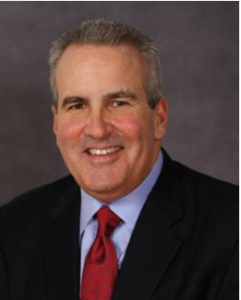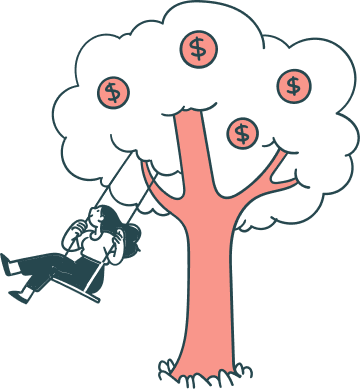Your nonprofit receives gifts of all sizes. Some of your supporters like to give in small amounts every year or every month, while others give larger gifts periodically. You can sort these different-sized gifts into different giving levels—low-level, mid-level, and major gifts.
Major gifts are typically the largest gifts your nonprofit receives, and they have the potential to fund your nonprofit’s biggest campaigns or to make up a serious chunk of your annual fund.
Major gifts also require a different kind of fundraising process than lower-level gifts do. Cultivation of major givers is a much longer and more personal process than soliciting lower-level gifts. However, major gifts are worth the effort they require because of the potential future efforts they support.
While it might feel challenging to begin soliciting major gifts (or to fine-tune your current approach), knowing some practical strategies can increase the success of your major gift program and boost the number of major gifts that your nonprofit secures. Our top five favorite strategies are:
- Conduct prospect research.
- Segment your supporters by interests.
- Create supporter societies.
- Analyze your major gift cycle.
- Offer compromises.
When you combine these best practices with the unique techniques and strategies that your nonprofit has used to build special relationships with your community, your nonprofit staff is bound to find success in the future. If you’re ready to learn more about reeling in major gifts more effectively, let’s get started!

1. Conduct prospect research.
The first step to building an effective major giving cycle is to ensure that you start with valuable cultivation prospects. First, ask yourself what constitutes a major gift for your organization. This number will vary between nonprofits based on your fundraising capacity and size, but it’s a crucial starting point.
Once you know what a major gift is for your organization, it’s time to start building a prospect list. According to Averill Solutions’ planning and feasibility study guide, you can do this at any time, but for a larger campaign like a capital campaign, you’ll generally start researching prospects during the planning phase.
A prospect list is the database of people in your community who could be cultivated towards giving a major gift. Your prospect list for major gifts will look different from your lists of mid-level and low-level gifts.
Your prospect list should include the following people:
- Members of your contributor community who have the capacity to give a major gift. Check out supporters who respond consistently to your annual fund appeal!
- Individuals who have given to nonprofits with similar or adjacent missions. Look at other organizations’ annual reports for major contributors.
- Individuals who have given to political campaigns with similar causes. Political giving is public knowledge, so take a look at those databases for relevant issues.
These will be the people that your major gift officers should get to know and cultivate for a major gift for your organization. But how do you find out what drives these people as individuals?
The key lies in conducting thorough prospect research and leveraging the right prospect research software. Prospect research is a technique used by nonprofits all over the world to learn more about the affinity and capacity that an individual may have for giving.
Affinity indicates that someone enjoys philanthropic giving and has a history of charitable behavior. Affinity can be determined by using prospect research software to look for indicators such as:
- Previous charitable giving to political campaigns and nonprofits
- A history of volunteering or attending charitable functions
- Board membership for a nonprofit organization
If someone has a history of philanthropic behavior, you know that they are open to contributing to a nonprofit and therefore could contribute to yours. You can also take this a step further by determining what missions or issues drive them to give.
Capacity is the ability of someone to give at a certain level. This can be determined by wealth indicators, which include:
- Real estate ownership
- Stock holdings
- Business affiliations
By analyzing these indicators, you can generally gauge an individual or family’s level of income, and therefore the level that they might be able to give at.
Combining these factors—affinity and capacity—will help you build an effective prospect list for your upcoming major gift cycle. Instead of spending time trying to solicit a major gift from someone who has neither capacity nor affinity for your cause, you can start in a better place by cultivating someone who can give a major gift and may be moved by your cause.
If your prospect list is full of individuals who have proven affinity and capacity, your major gifts team will be able to move forward confidently.

2. Segment your supporters by interests.
In order to more effectively create personal connections between your organization and your potential major givers, your major gift officers should learn as much as they can about your prospects’ interests and then use that information to segment your prospect list.
Step one of this strategy requires only that your major gift officers work hard to cultivate your supporters. As they get to know them (and track the prospects’ interests in your major giving CRM), your officers will have a better idea of what drives your prospects into action.
Once you have a solid understanding of your prospects’ primary motivations, it’s time to split your prospect list up.
Segmentation is a strategy used to separate your whole community (or, in this case, your major giving prospect list) into smaller, more manageable groups based on commonalities. In this case, the commonality would be what inspires your prospects’ philanthropic behavior.
Then, once you have your smaller groups, you can create more targeted, individual cultivation opportunities such as luncheons, events, volunteer opportunities, and more.
What do we mean by “segment by interests”? Let’s go with an example, and then you can apply the principles to your own nonprofit.
Say that you’re a nationally recognized nonprofit with a mission of lessening the suffering caused by cancer. Your mission attracts a lot of different people for a variety of reasons. Use those common reasons to create three common segments:
- Those passionate about children’s causes.
- Those passionate about scientific medical research.
- Those passionate about lessening the burdensome costs of healthcare.
Your nonprofit has some impact on all of these issues because they fall under the purview of your overarching mission. As you get to know your major gift prospects, separate them into segments based on their internal values.
Those who are most passionate about your children’s causes and efforts should be cultivated with this in mind. Give them tours of children’s hospitals that you work with, introduce them to the children that you’ve helped, or host an informational luncheon where you discuss the numbers and stories of the children involved in your nonprofit’s missions.
Assess your nonprofit’s fundraising statistics to determine which of your causes are the most popular, and use those as a starting point for trying to create a connection. Because you target your cultivation strategies to what your prospects are invested in, you increase the chances that you successfully solicit a major gift from them.

3. Create supporter societies.
Supporter societies are a great fundraising strategy for any level of giving, but they’re especially helpful for converting mid-level supporters into major givers.
Supporter societies are a type of membership program for nonprofits where you split your supporter population into levels based on their previous level of giving. For example, a politically-minded nonprofit organization might create a system of supporter societies that look like something like this:
- The Representatives: Those who have given between $1,000 and $5,000 in the past two years
- The Senators: Those who have given between $5,000 and $20,000 in the past two years
- The Presidents: Those who have given more than $20,000 in the past two years
Then, the members of each society receive different perks based on the society in which they currently are active. To continue this example, the Representatives would get a room named after them in a new building. The Senators would get an eponymous room and a plaque on the front wall. The Presidents would get a room, a plaque, and a photographic portrait in the front hall.
The perks and tiers will vary based on your nonprofit, but the message remains the same. And how does this strategy tie into major giving?
When you notice that someone is approaching the high end of your mid-level giving tier, approach them about giving a major gift. They’ll be more likely to give one if their gift earns them a place in the major giver society, especially if the perks include something that provides value to them.

4. Analyze your major gift cycle.
When your nonprofit decides to focus on major giving, it doesn’t always mean that you have to start from scratch. If your organization already has a major giving strategy or program, it may just mean that it’s time for a tune-up in your tactics.
Consider your major giving cycle. Most cycles of fundraising, regardless of giving level, look something like this:
- Identification
- Qualification
- Cultivation
- Solicitation
- Stewardship
These five steps are used as the foundation for most fundraising strategies. Find people who might like to give, research them further to determine if they’re a qualified prospect, build a relationship between them and your organization, make the ask, and then maintain a strong and healthy relationship with them after the gift is made.
In order to improve your major giving cycle, you have to quantify success and use those metrics to determine where your cycle is weakest.
Use your existing major giving and supporter analytics to determine at which step of the process your prospects usually drop out of the process. Are you having a difficult time finding qualified prospects? Or do you get all the way through the cultivation process and then are unable to seal the deal?
Once you analyze where your prospects are dropping off in the process, you can take a hard look at your strategies for that step and fine-tune things until you’re satisfied that you’ve fixed the leak. This isn’t a one-and-done process, however—don’t ignore your data from this fundraising cycle. Keep an eye on your prospect metrics to determine where you’re losing interest.
Improving the drop-off rate in your major giving strategy will increase the number of successful solicitations that your major gift officers can make.

5. Offer compromises.
If you find that your prospects are dropping off most severely during the solicitation process, it might be time to take a step back and reconsider your ask. The issue might not be that your major gift officers aren’t delivering an effective presentation—it might be that your prospects just aren’t willing or able to give that type of contribution right this moment, and don’t know that they have any other options.
If you want to increase your rates of successful solicitation, adjust your fundraising plan and offer your supporters different options. All roads lead to your nonprofit earning a major gift, but they all offer your supporters a different approach.
Some common alternatives or compromises to the traditional major gift include:
- Breaking up a large gift over a period of months or years.
- Deciding on a planned gift later instead of a major gift now.
- Asking for a matching contribution if your team raises a certain amount in other gifts.
These options may be more attractive to your prospects or may make them more comfortable with giving such a large gift in smaller amounts than all at once. Your nonprofit still benefits from this approach, and it frees up your major gift officers to pursue other opportunities later.
Major gifts are important for the success of any nonprofit, so revitalize your major giving strategy by incorporating these fresh tips into your toolkit.
To take your major giving program to the next level, you should also consider working with a fundraising consultant. A consultant can help you take a critical look at what is working and what isn’t, and help you determine the best way forward.
Happy fundraising!
Author Bio




